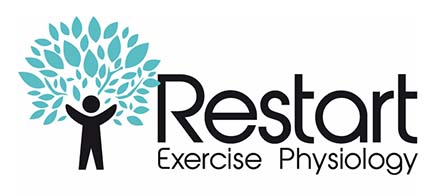Do you or someone you know have high blood pressure, currently managed with medication?
In November 2017, the American College of Cardiology and the American Heart Association released a new set of evidence based guidelines for high blood pressure classification. Accompanying the guidelines are new recommendations for the prescription of medication versus when lifestyle modification is required (or a combination of both).
The Facts
According to the Australian Heart Foundation:
– Approximately 6 million adult Australians have some form of high blood pressure, making up 33.7% of the population,
– The prevalence of high blood pressure is greater for Australian males (35.3%) compared to Australian females (32.3%),
– The proportion of Australians with uncontrolled or unmanaged high blood pressure increased with age, with 46.9% of the population aged 75+ falling into this category,
– Interestingly, people in rural/regional areas have a 27% greater rate of high blood pressure compared to metropolitan areas.
Understanding the Numbers
When we talk about blood pressure it is vital to understand exactly what “the top and bottom numbers” mean. For example, 120/80 mmHg, which could be described to you by your GP as 120 over 80. To clarify, systolic blood pressure (the top number) refers to the amount of force/pressure (measured in millimetres of mercury) exerted on your arteries and blood vessels during the contraction of your heart. The diastolic pressure (the bottom number) refers to the pressure in your arteries when the heart muscle is filling. Another user friendly way to describe it is:
– Systolic blood pressure is a measure of blood pressure while the heart is beating,
– Diastolic pressure is a measure of blood pressure while the heart is relaxed.
Both numbers represent your overall blood pressure and are used to determine the state of your heart health: the higher the numbers, the greater stress and strain placed on your heart and cardiovascular system.


The NEW Definition of Blood Pressure
– Normal blood pressure – 120/80mmHg or less,
– Elevated blood pressure – 120-129/80mmHg,
– Stage 1 Hypertension – 130-139/80-89mmHg,
– Stage 2 Hypertension – >140/90mmHg,
– Danger Zone – 180/120mmHg.
Previously, elevated BP was known as prehypertension and the systolic/diastolic ranges were wider and higher for each category.
Danger Zone
A consistent blood pressure reading of 180/120mmHg indicates a serious medical event and should be treated as life threatening. This is known as a “hypertensive crisis” and requires immediate emergency medical assistance. It could be accompanied with chest pain, shortness of breath, visual changes, symptoms of stroke, blood in urine, dizziness or headache.
Interventions: Lifestyle Modification versus Medication
Elevated blood pressure category
Recommended lifestyle modification:
– exercise,
– diet modification,
– weight loss,
– no more than 2 alcoholic drinks per day for men, and 1 for women.
Medication:
– not recommended.
Stage 1 Hypertension category
Recommended lifestyle modification:
– as per Elevated BP, however only in cases where Cardiovascular Disease (CVD) risk development is <10%.
Medication:
– lifestyle modification PLUS medication for cases with CVD >10% and diagnosed Stage 1 Hypertension.
Stage 2 Hypertension category
Recommended lifestyle modification:
– above non-medication recommendations alone not enough.
Medication:
– Even if patient has a <10% risk of developing CVD, all stage 2 cases should be treated with medication AND lifestyle modification.
The Bottom Line
Encouragingly, simply improving your diet can reduce your systolic BP by 11 points, and for each additional healthy habit (eg exercise!) you adopt can bring this down further by another 4-5 points. The research shows that consistent 20-point elevated systolic BP and 10-point elevated diastolic blood pressure is associated with DOUBLING the risk of death by heart attack, stroke, heart failure and aortic aneurysm.
Worryingly, the new BP definitions mean that 50% of all US citizens are considered to have elevated or high blood pressure, and these numbers will also be elevated in Australian when the new guidelines are applied to current statistics. This does not mean that more medication needs to be prescribed to manage elevated blood pressure cases but rather a stronger emphasis on lifestyle modification (such as non-drug interventions including exercise) needs to be advised. Suspicion of the pharmaceutical profits of the new guidelines should not abound; rather, the overriding message is to take on board the benefits associated with preventative measures such as diet and lifestyle modification.
If you are concerned with recently elevated blood pressure scores, or are unsure how to include safe exercise into your daily routine to improve your hypertension management, then an Exercise Physiologist can help!
By Kate Wyatt
References
– https://www.health.harvard.edu/blog/new-high-blood-pressure-guidelines-
2017111712756utm_content=buffer784f2&utm_medium=social&utm_source
=facebook&utm_campaign=buffer
– https://www.heartfoundation.org.au/about-us/what-we-do/heart-disease-in
-australia/high-blood-pressure-statistics

0 Comments